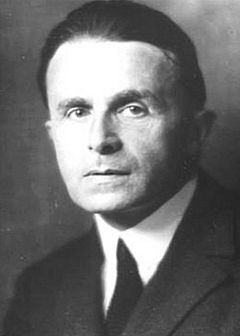Name Hans Tietze | ||
 | ||
Books The Drawings of the Venetian Painters in the 15th and 16th Centuries | ||
Hans Tietze (May 1, 1880 in Prague – April 4, 1954 in New York City) was a Czech-Austrian art historian and member of the Vienna School of Art History.
Contents
Life and work
The son of a Czech lawyer, Tietze grew up in Prague. In 1893, his family moved to Vienna. From 1900 to 1903, he studied archaeology, history and art history under Alois Riegl, Julius von Schlosser and Franz Wickhoff at the University of Vienna. In 1903, he completed his Ph.D. dissertation, supervised by Wickhoff, on the topic of medieval typological representation. In 1905, he wrote his Habilitationsschrift on Annibale Caracci's frescos at the Palazzo Farnese.
In 1905, he married fellow art-history student Erika Conrat. For some time, he was Wickhoff's assistant at Vienna's first art historical institute chaired by Josef Strzygowski. He also became an assistant and secretary at the Commission for Monument Preseveration. In 1909, he was appointed lecturer in art history at the University of Vienna. After World War I he became assistant professor and began editing the art journal, Die bildenden Kunste. In 1913, he published his Methode der Kunstgeschichte, which "attempted to summarize the basic principles of the evolutionist methodological project developed by Franz Wickhoff and Alois Riegl and articulated explicitly by Max Dvorak." From 1923 to 1925, Tietze helped reorganizing Vienna's traditional art museum system into a more popular and pedagogical one. For instance, he combined the print collection of the Hofbibliothek into the Albertina collection and created the Belvedere galleries, consisting of the baroque museum, the 19th-century museum and the 20th-century art museum. He also wrote radio broadcasts on art.
Tietze supported modern art, joining the Gesellschaft zur Forderung der modernen Kunst in Wien (Association for the Promotion of Modern Art in Vienna), but also wrote groundbreaking studies on Albrecht Durer and Venetian renaissance art. For instance, in Tintoretto: The Paintings and Drawings (1948) the Venetian painter is portrayed as a Baroque artist and the dominant figure in the transition from the High Renaissance, as a "modern artist, clothed in the grab of the Classic Art".
In 1932 and 1935, Tietze was a visiting lecturer in the USA. After the annexation of Austria by the Nazis in 1938, he and his wife went to London and then to the United States, where he was appointed visiting professor at the Toledo Museum of Art in 1938-1939. In 1940, he settled as a private scholar in New York City, where he wrote introductions to some museum catalogs and "great art" surveys for the general public.
Among his students in Vienna were Ernst Gombrich and Otto Kurz.
In 1965, the Tietzestrase in Vienna was named in honor of Tietze's memory. The "Tietze Galleries for Prints and Drawings" at the Albertina, Vienna, are also named after the art historian.
